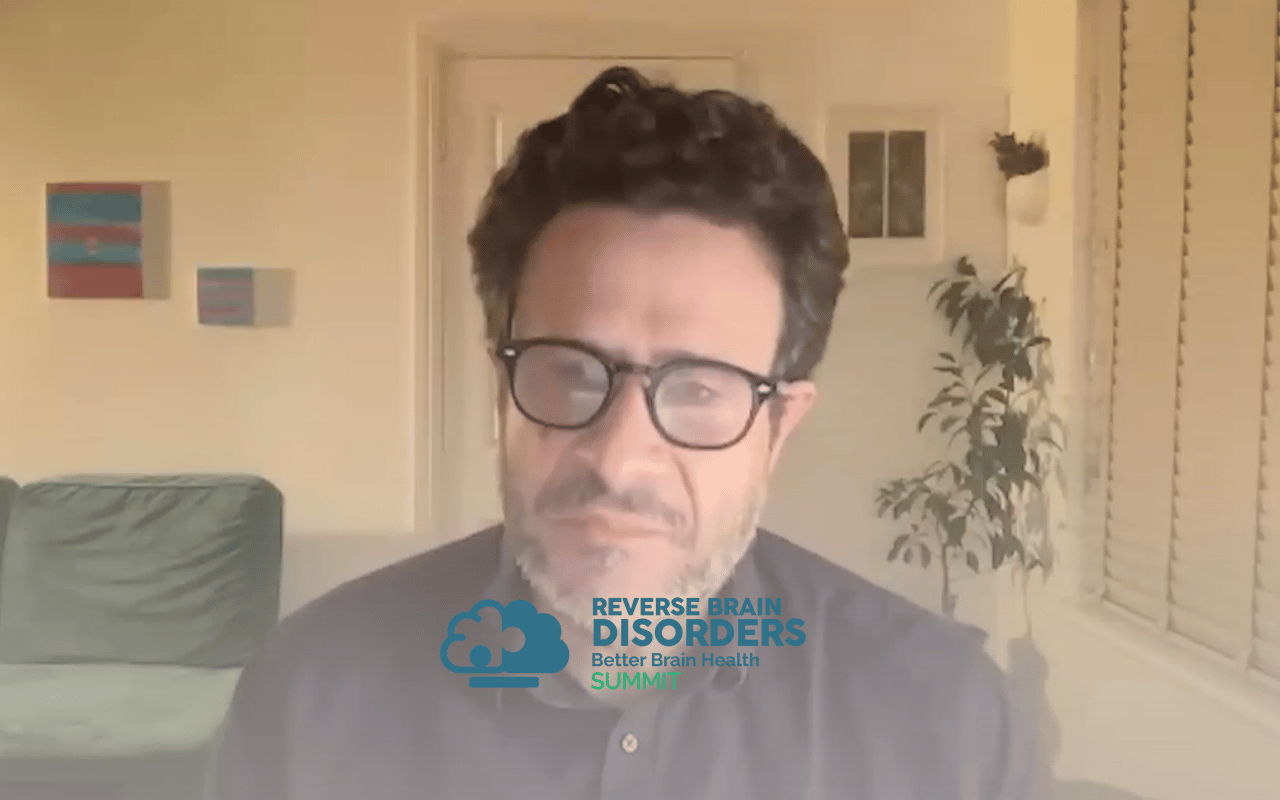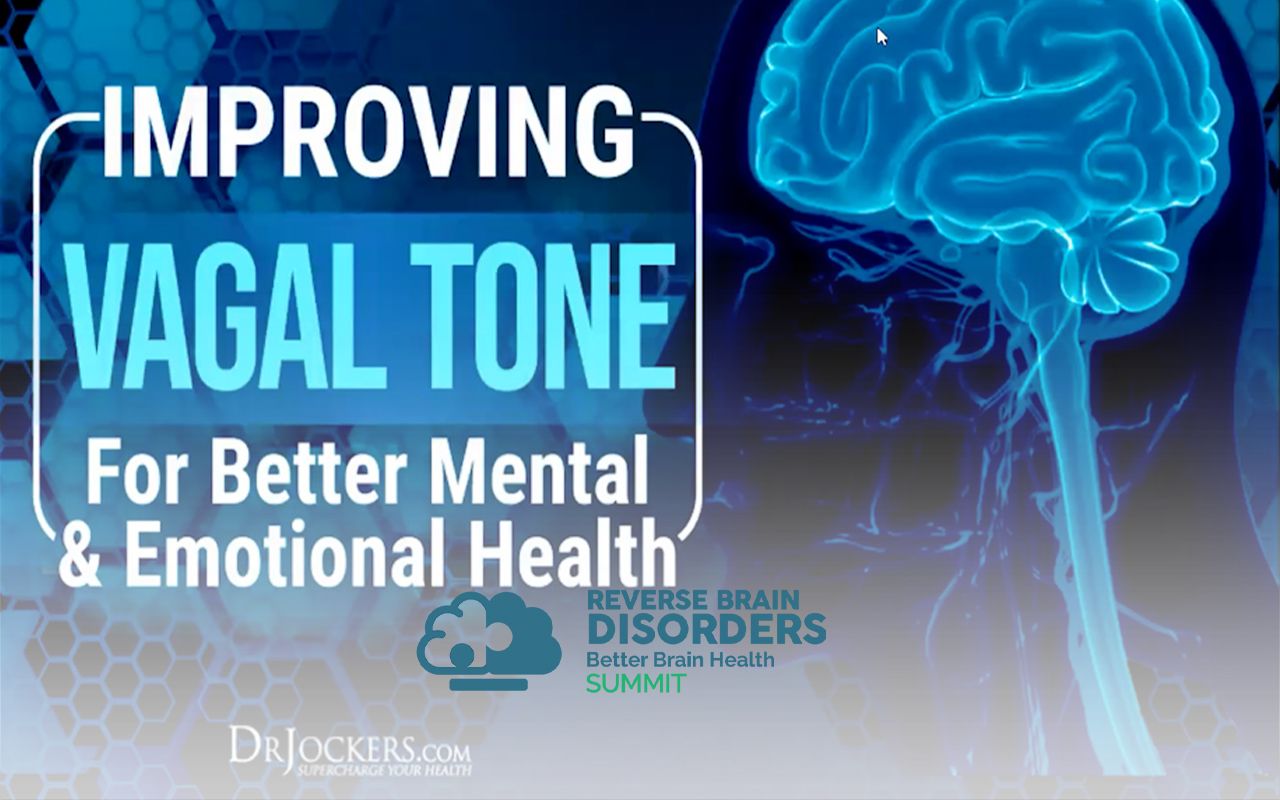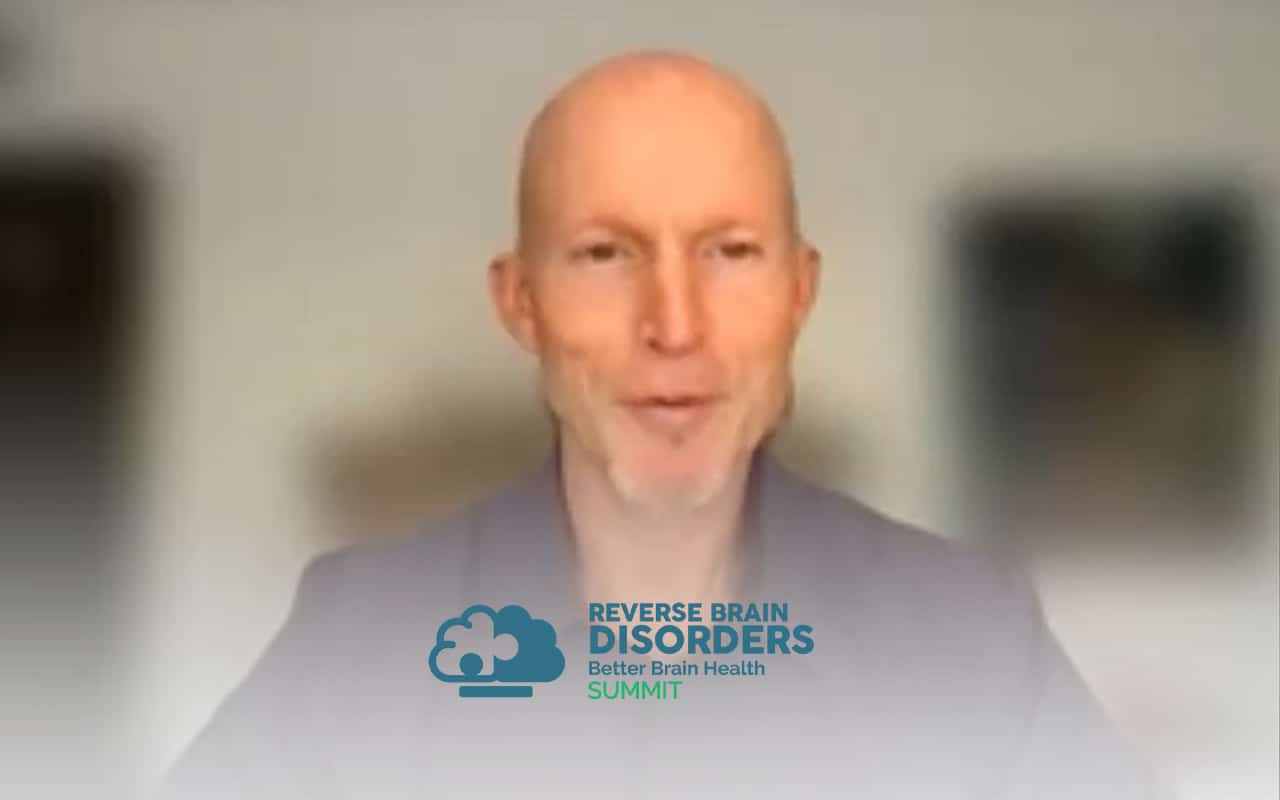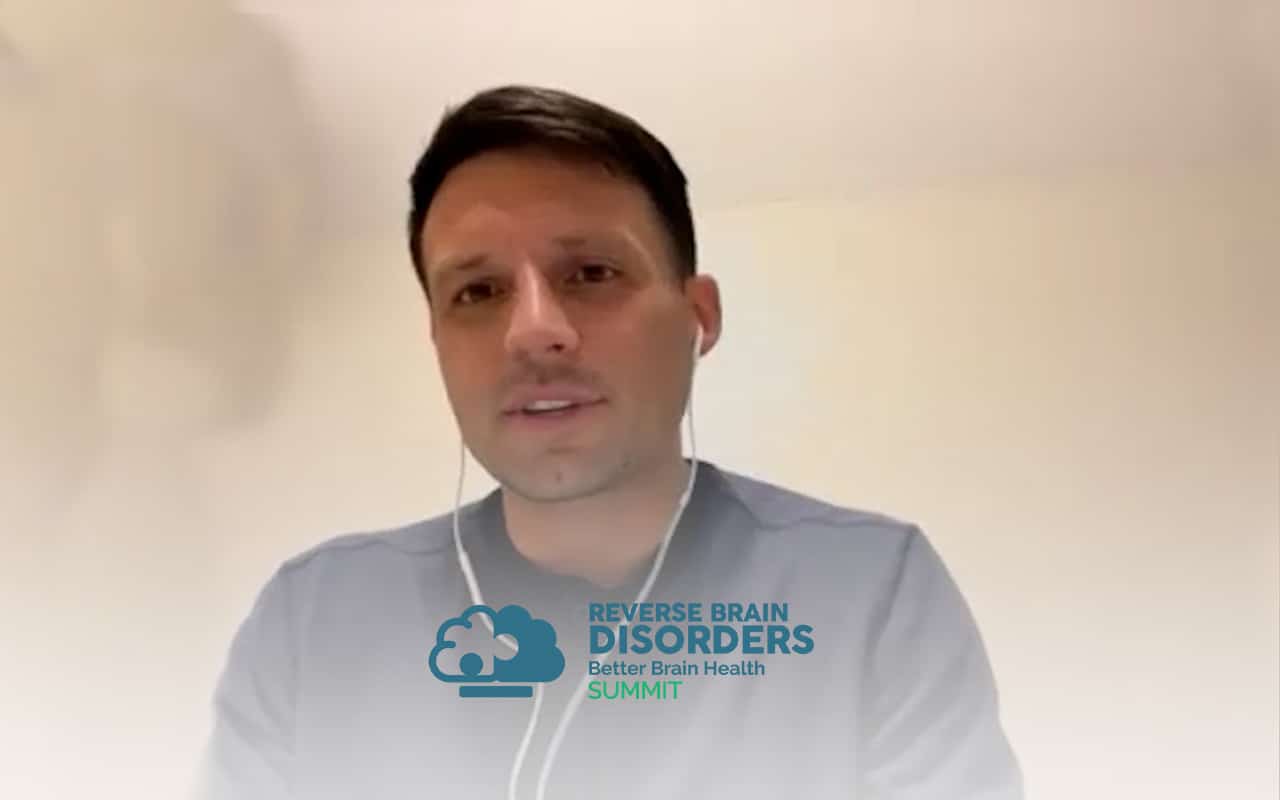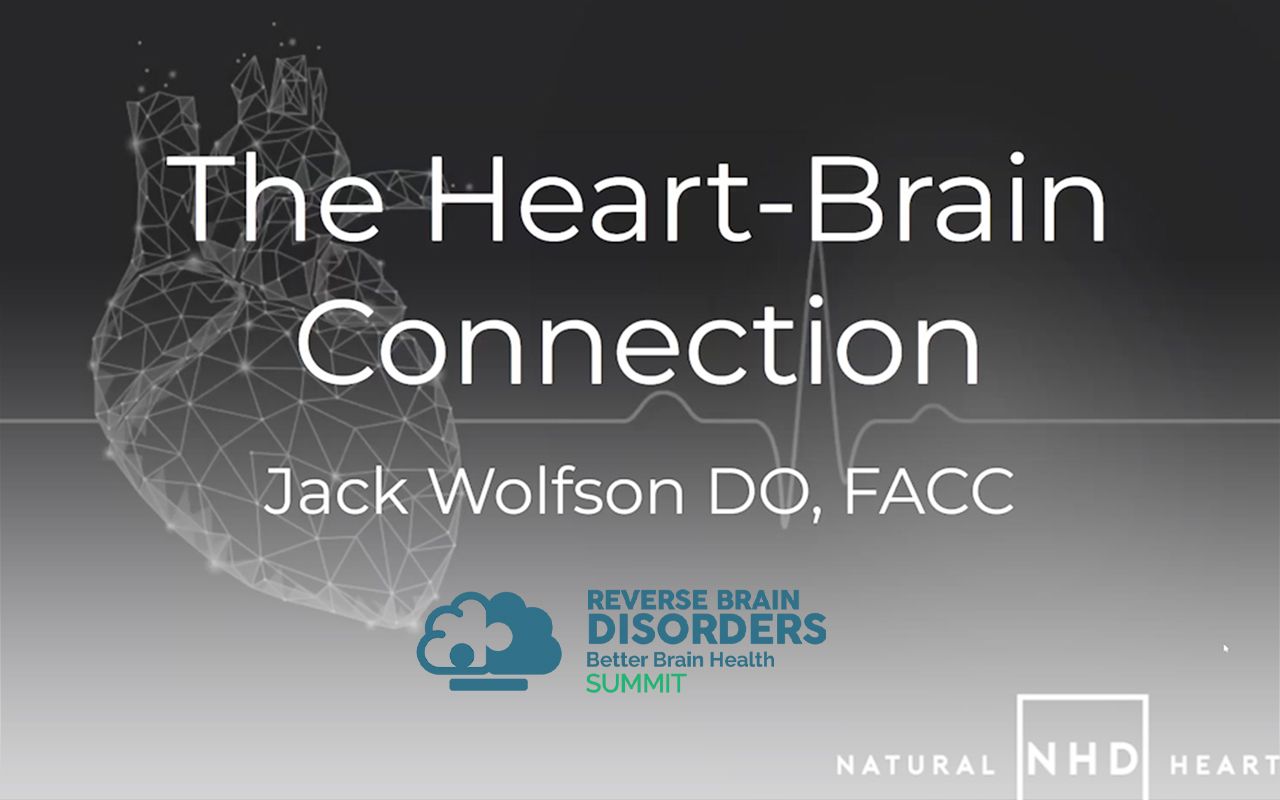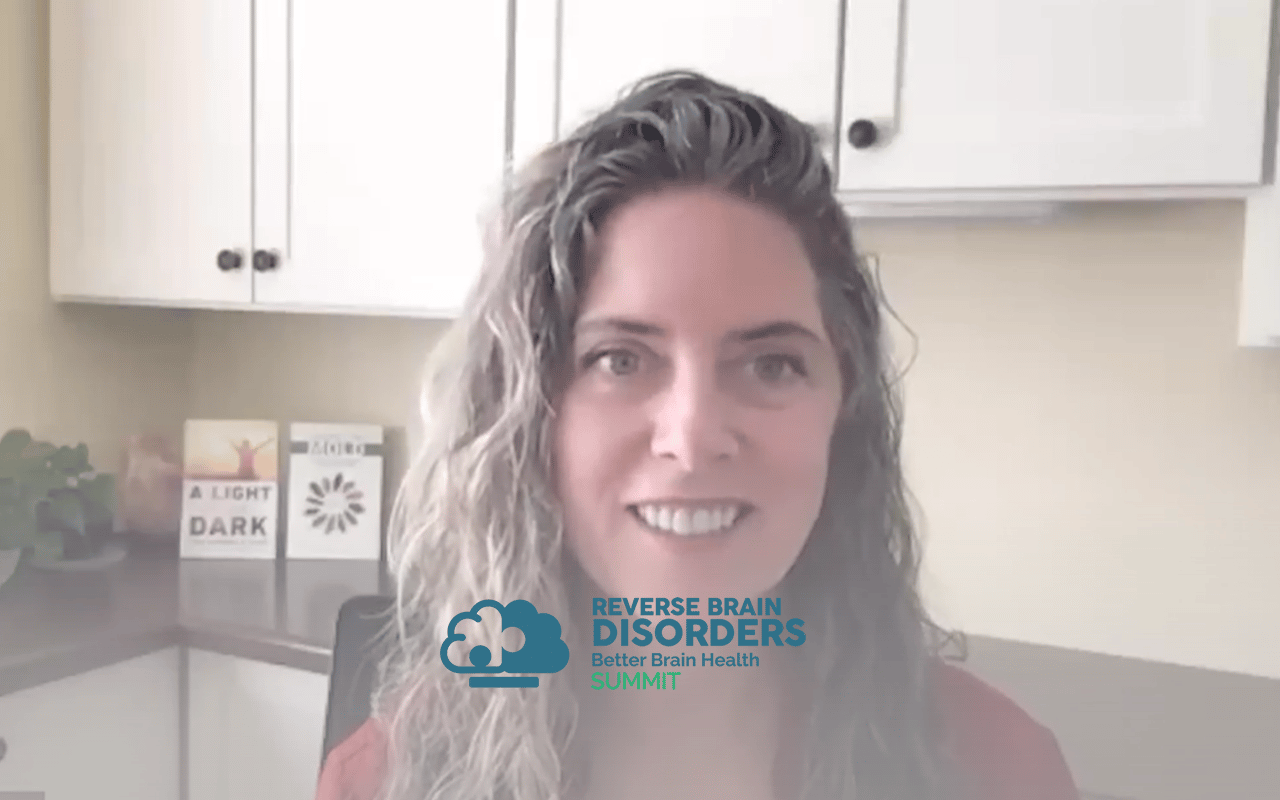Join the discussion below

Dr. Ruan is the Founder and CEO of Texas Center for Lifestyle Medicine. He devotes his career in practicing and building systems that allow for efficient delivery of healthcare. He is a board certified internal medicine physician but also have advised with companies to improve their workflow, company culture, marketing,... Read More

Graduate of Trinity College Dublin, Francesco Amico, PhD, is a behavioral neuroscientist with over 20 years of experience in neuropsychological research. His original work focuses on the development of novel technology to improve the diagnosis and treatments of neurological/neuropsychiatric disorders. He is regularly collaborates with clinics and companies throughout North... Read More
- How neurofeedback can improve brain and mental health
- The role of technology in addressing major depression, suicide, and mood disorders
- How using home (remote) neurofeedback is superior to in-office neurofeedback
Cheng Ruan, MD
Dr. Francesco Amico, good friend of mine, he’s part of our team at Texas and flexible medicine and he’s also an expert in something called neurofeedback. We want to talk about neurofeedback today and what we actually see in patients. So Dr. Amico is a PhD in behavioral neuroscientist, twenties of experience in neuropsychological research. And his latest publications were actually with me as well. Looking at populations with a lot of head traumas and because of injuries um CBD and what they look like on neuroimaging. And so he regularly collapses with a lot of clinics within north America focusing on this thing called remote neurofeedback training. So we’re actually going to talk about that today. So I’d like to welcome Dr. Francesco Amico. All right, welcome to the show. Thank you for coming on. I really appreciate you for coming on. And we’re gonna get started go directly into this thing called neurofeedback organs, neurofeedback, let’s call it a resource. 1st. 2nd man, that’s your background. What is really the gap between where research is now and how practice is whether it’s neurologists or primary care or all of the where’s the gap?
Francesco Amico, PhD
Sure, well, first of all, thank you for having me and yeah it’s a great honor to speak at the summit. So basically the big gap is and we have tons of research and Neuroimaging and diagnostics in general and the way that clinicians approach diagnostics and what happens is mainly not all the tools and the information that we have that comes straight from research from the last I would say 30, 40 years of research not only a fraction is used in clinical practice. And one of the you know my expertise ranges from apart from my PhD which was a new pharmacology from near imaging to EEG And QEEG Now I’m going to talk about the disease just very briefly but mainly near imaging. And there’s lots of research and neuroimaging research and that basically shows us that there’s a strong link between neurological imbalances or neurological or psychiatric imbalances and anomalies in the brain. The only problem is that M. R. I can’t really be used in clinical practice to show functional functional damages or functional anomalies. It’s mainly used to look at any insults from a structural point of view. Um So that’s where E. G generally speaking comes really handy because of the temporal resolution and and also because it can really show um from it’s it’s a lot easier to set up. It takes minutes instead of uh can provide so much information and at the same time um classic with standard E. G. The E. G. Has been used it’s mostly common that most clinicians are familiar with can still can provide enough information and other than um in swings and magnitude of activity and that can be very very very informative.
Cheng Ruan, MD
So let’s break it down for a second. You know breaking down real quickly. So M. R. I. For everyone listening to this is basically an image of the brain. The image of the brain doesn’t tell us much tells us other tumors. Maybe other large strokes can’t even we see small strokes. Are there you know any sort of brain abnormalities or vascular malformations or anything like that that can cause particular symptoms? Not most of the time. No emery doesn’t look any different when people have neurological disorders is because there’s the functionality of the brain not the actual like what the brain physically looks like. The M. R. I. That’s different. And this is where this technology called E. E. G. The electroencephalogram comes in. So if people are familiar with the E. K. G. Or E. C. G. Is basically a rhythm of the heart. We’re now looking at the rhythms of the brain. And so instead of 12 leads 12 things that the doctor puts on.
You were looking at a whole lot more on your brain and different E. G. S have different leads. And so we’re basically looking to have a cap. Some people have a cap on. Some people have direct leads onto the brain. We’re looking at how each brain conducts um per second of whatever it’s doing. And sometimes we have EEGs. That we see people just chilling at rest. Some people we have blinking, some people we have those eyes open and challenges. So it’s like and then and then we get to this world called quantitative eeg which is we’re talking about today is like a high definition movie of what’s going on your brain that you can’t see with M. R. I. Or cT scans and stuff like that. So that’s what we’re talking about. But the most important part that what you’re talking about is we can see why people are doing certain things in this functionality tests of the brain. Right? Why people or or is there any evidence of like attention issues, depression issues. And in your research you actually found patterns of people maybe who are more likely to commit suicide, right? Yeah.
Francesco Amico, PhD
Yeah. My both my research and also my more lately saying my practice with my uh near future clients I’m saying um that certain patterns um some specific frequencies are in specific regions are show imbalances. And so it’s on if you if you work with patients on a regular basis you see that for example patients is particularly stressed has some specific imbalances in some specific areas of the brain. And this is what Q. E. G. Really shows can break down the hole. E. G. Signal into discrete specific frequencies. And research shows us that these imbalances in a specific frequency range in specific regions of the of the sculpt and are very much very much correlate to a neuro behavioral imbalances. That means imbalance even memory impairment or um hyperactivity or attention deficits. And so it’s highly informative and it’s a huge leap when we compared to standardized standard EEG.
Cheng Ruan, MD
And now what’s interesting is that there’s this quantity of EEG, QEEG Is not necessarily like the standard of care currently within neurological societies for neurological right? And partially is because this is a functional test is not used to necessarily diagnose anything. But you used to answer why things are actually happening right? And when people are actually looking at this, when I go the patients looking to quantity E. G. There’s there’s a bit of a validation because we’re really turning their words into numbers like hey you’re yes you say inattention or poor attention. But how do you compare to the rest of the population like this is where you are compared to the rest of the population that your age gender. And this is what we call the normative data. The normal data that we that we actually compared to. But we have this amazing ability to collect this information, right? And you know of course our device we use the brain view which is a quantitative EEG device. So we have this amazing device called the brain view and it’s some laptop and we see this brain imaging. We also have an amazing ability because we have this technology to train the brain into doing something that’s desired right? That our sleep or attention etcetera etcetera. How does that work? That’s how neurofeedback. How does neurofeedback work?
Francesco Amico, PhD
Yeah. Well basically, neurofeedback is a way to train the brain to self regulate in a completely non-invasive way. So we’re using learning to teach the brain to help the brain find a more effective way to function. And we’re using a very specific type of learning is called open conditioning. That is more, nothing less than, you know, getting a reward every time the brain does something that is desirable. So we create protocols and that uh designed to train specific frequencies in specific in electorate regions and electrode sites. And every time that goal is reached the patient and is rewarded in a very specific way in in a very engaging way. We use videos or video games to again engage the patient in the training. So every time, for example, patients watching the YouTube video, every time our goal is reached, the video will start playing. If the goal is not reached, the video will start shrinking or maybe getting darker. So, so the brain without any effort, the brain naturally starts to function uh to respond to this world ward and spending a lot more and more for more time in that specific frequency. Working in that specific frequency range and there’s no effort, you know, a lot of time patients asked me. So do I have I feel that if I if I, you know, if I strive to get, you know, the video to play more clearly, you know, I get better results. No it’s just an impression that your brain naturally does it so and without any any help. So which is, you know, there’s no stimulation, just learning. And this is so key. Especially in those patients who can’t people can’t be medicated for different reasons.
Cheng Ruan, MD
Or the medication may not work anymore, right? Or in the medication never worked in the first place and tolerate. And so or if they even on medications is very useful to the to the neurofeedback. And what’s important about this is that and I tell people that because we’re looking at your brain frequencies, a lot of this is is not conscious. You don’t really know what frequency you’re in, but we’re feeding back to you that this is the frequency that you’re in. So whenever you’re in a desired frequency then you’re being promoted and that’s through a game and that’s through, you know, progressing during the game. And so essentially what’s happening is that a lot of the circuits that we operate on may be stimulated from childhood traumas are just traumas in general may be stimulated by the way that we were raised and stuff like that. If a lot of those things are creating this neural circuitry and most of it’s created between the ages of three and eight and we can actually uh we can actually look at it on the quantity EEG. Then we can say you know what this circuit trees may not be serving you anymore, right? You’re an adult or maybe after a particular you know, time in life is no longer serving any more. But this one maybe we can create that path. And you know what I used to do a lot of people who used to do is that we were able to do this in the office but now we have the technology to do it at the comfort of the patient’s home to people’s homes. So we’re watching this want to neurofeedback, you can actually do it at home that’s monitored by professional. And so how does that work? You kind of explain that home.
Francesco Amico, PhD
That is it is very exciting because this is my role with and it’s very exciting to be collaborating with you. So we there is as you were saying there’s a technology has been evolving very quickly in this field, especially with some special some patients in mind and and say population of huge population of patients in mind. Those patients can travel to the clinic for some reason. So and technology has been simplified and to you know, from you know a computer uh an amplifier and a head cup to its simple headset that in very lightweight and easy to fit in between your forehead and your and your ears and an external lecturer that can be moved and wherever we want. So basically I do the work in the background. I created, I create these training protocols that we mentioned and the there’s an app that tells the patient step by step, what to do, where to place the electorate, how to be, to do the calibration, the arresting EEG Calibration and and then provides a library customizable library of videos and video games that the patient can access and can train any time during the week, any time of the day and it can always connect with me, you know, all my patients right to me. You know, they have full access to me and if they have any questions and I’m always here to answer. And so it’s basically so it’s uh really, you know, there, it really solves the problem of those patients who can’t really move, drive weekly to the clinic. And on top of that it’s a lot cheaper than the average argue.
Cheng Ruan, MD
It’s a lot more effective. And I’ll tell you what, it’s, I think it’s so effective that we stopped doing a lot of the neurofeedback or all of the neurofeedback in the house. And I think there’s multiple points of this one, it’s easier to feed back a brain where it’s then rest smoke like hey, get up early in the morning star neurofeedback session, you feel pretty good, right? It’s a lot easier to promote these alphas and etcetera. Doing that second is that the adherence is so much easier. You know, you’re not taking hours out of your day. You’re taking, you know, 10, 15 minutes out of your day. You neurofeedback session third. As long as you have internet connection, you can do anywhere in the world, right? And so you can put it with you and I took mine to San Diego with me recently. and number four, it’s relatively inexpensive to access. A lot of neurofeedback sessions are quite expensive because the machines themselves are extremely expensive for the clinic because I know because I have to. We don’t use them anymore but um but now it’s like now becomes like very expensive for for the version that we’re using is called myndlift. M. Y. N. D. L. I. F. T. It’s an app that you can actually download. And our code is called BrainRX. B. R. A. I. N. R. X.
On the code there to request neurofeedback sessions. So it’s literally an app on the phone or the ipad or whatever. And people can download it. And then there’s also things that are beyond that, there’s there’s journeys as mindfulness journeys and meditations and journeys. This is not just about the technology within the brain, it’s about what peace can you really created, which is now. We’re getting into the, you know, integrative health and functional neurology, right? And so, but let’s talk about that for a second. So we talked about where the gaps are in the current technology and clinical practice. We talked about quantity EEG. Now we’re talking about home neurofeedback.
Let’s dive into what does it actually take to get the brain a lot better. Because very recently I was emailing you about somebody and you’re like, gosh, you know, I hope I hope she’s doing a lot more than just your feedback. She needs a lot of like mind, body medicine, therapy, etcetera, etcetera. Right? So it’s not just about a piece of technology that you can that’s gonna create miracles. It is a very holistic journey. Right? And so what do you think are the current components that are missing in practices that can allow the patient to develop this brain healing journey?
Francesco Amico, PhD
Well, the main thing I ever have recently published that uh a commentary that uh summarizes my thoughts and in this context, the main thing is that the commission, for many reasons, doesn’t have enough time or sometimes the tools to um, to really dig into the symptoms. So very often in clinical practice, especially in psychiatry, patients get asked are asked the question, how are you, have you been over the last couple of weeks and sometimes, um, they, you know, they asked to fill out a few questioners, but from research, we know that this is not enough, there’s a there’s a huge cognitive bias and especially in my in my air research like in the depression and suicide. So people say hey I’m okay and next time you know the next thing you know they’re doing like very serious. So we need in clinical practice to effectively combine um the screening the symptom screening the interviews of course the questioners the cognitive performance in in cognitive paradigms and and also EEG And metrics as much as possible. And so this is if you you know I’ve talked during the course of my research and have the chance to talk to several consultants and they actually don’t have the time because they see so many patients and they don’t really have sometimes even the background to understand how symptoms relate to EEG. And two M. R. I. And you know you have to be an academic and and so mind lift my opinion solves many of these problems. We can run an assessment. I run an assessment my patients with our patients everyone once every month and we can run an assessment in 40 minutes.
Pretty much we can I can select those questions that are relevant to their intake. And so they have to answer their questions. Their questioners have to perform the cognitive task and they have to to do resting state eyes closed. I open EEG And I get tons of metrics um from from the assessment and QEEG As well now. So I have a lot of information that I can on the basis of course of you know my knowledge on how these these metrics altogether put together. Can tell us about the imbalances the behavioral imbalances of of the patients so I can put together protocols that target those, you know, most prominent imbalances that need to be addressed. So every month again in your assessment I tweaked the protocol. Sometimes I delete the old ones and making new ones because in the meantime stuff happens to us there. You know there is stress, there is there’s you know there’s so much so you need to and that I can do in in 30 minutes. I can think about what’s happening because of course there’s research that tells us so much about 60 years of research at neurofeedback research plus QEEG That tells us a lot of information about political populations A. D. H. D. Epilepsy or stress disorder. So I can customize the those protocols on the basis of what the patient’s background is. And on the basis of all these data, behavioral symptoms and complaints some people call them and near behavior or psycho motor and and EEG So I am, you know here I am, you know what have been and advocating. You know for many, many years in my research I’m doing it with patients.
Cheng Ruan, MD
Yeah. That’s amazing. So now now the researchers meaning the technology is actually meeting the clinical, which is which is really nice. It’s also pretty rare that we actually see that right off the bat. Right. And so, you know, and you know, let’s talk about who are the perfect people for this new feedback for the myndlift. Like who are the typical people that should say, hey, I should try this.
Francesco Amico, PhD
Well, generally speaking your feedback and can be used by anybody. I use it actually actually every every week or train between as much as possible. So whether there’s no such a person who’s um say perfect, there’s no perfect profile, we all go or I mean, are we human beings. So whether you’re, you know, you’re working in the corporate world, you know, this stress, there’s an especially, you know, if you feel healthy but there’s anxiety distress. So even though there’s no psychiatric or neurological condition and you and your feedback, especially what we do can really get provide and support to those people feel, you know, that life is kind of has been heavy, you know, the last few few months or years. And so of course, you know, they’re, you know, there is a feedback is very research is very much explored in in your developmental disorders for for example, ADHD, ADD, autism, although in the main effects are on the effective sides, autism also epilepsy and uh depression of course anxiety. yeah, so there there is there is a lot and there’s a lot we can we we definitely our patients are patients reflect pretty much this um applicability of neurofeedback.
Cheng Ruan, MD
And it’s a very large body of doing quantitative analysis and your feedback and like addictive behavior you know quitting smoking including drinking um and other drugs and stuff like that. Right? So I think a lot of this is coming into fruition you know very recently and I’m glad that we’re really ahead of it and uh and and you know doing your own feedback just for me professionally is one of the most rewarding things I’ve ever done in my life. Just seeing the patients actually improve not responding to medicines or not responding to supplements, not responding to diet changes, not responding to the fasting and lifestyle changes. Right? And so so that’s been a really big game changer now. You know the people who are the absolute best outcomes for neurological disorders whether it’s memory, also ADHD, Alzheimer’s, Parkinson’s etcetera etcetera. The people with the best outcomes of the people who receive coaching as well. So we’ve got lifestyle coach coaching, we have functional medicine coaching, we have mind body medicine coaching, tai chi chi going all this stuff in our facility which is very good but we’ve taken it to the digital side as well a lot of people to get in on zoom and that’s what people wanted to do during the pandemic. And our outcomes are better than they were in person, which is weird to me, I figured in person would have been better. But actually it was it was it was not it was actually on these video sessions. But I think it’s it’s a very holistic thing, right? It’s like our brains are very complex, it’s a very complex organ because it’s a very complex organ. There’s so many different things of factors that are that are creating sort of brain destruction of destructive states and really takes everything all inclusive together to formulate change, you know?
Francesco Amico, PhD
Yeah, exactly, and it’s important to distract the fact, to stress the fact that there is the research out there showing that neurofeedback is to be effective on its own. But even more effective if combined with psychotherapy or, you know, as he was saying in a more holistic fashion, um with other types of uh interventions, whether it be whether it be um coaching in general and there there is issues there and so and so can be used as a standalone or complementary even with farm work therapy, you know, it’s there, Pharmacy therapy can’t really solve people think, okay, I’m gonna get this antidepressant, I’m gonna solve all my problems. No, it doesn’t work. Unfortunately that way, apart from side effects doesn’t work that way. And Neuro feedback has no side effects in 60 years of research, it’s there’s no side effect has been, has been shown only a bit of tiredness you feel. For example, sometimes I train twice because I love it and I feel a little bit more tired and so I take a ticket is okay. I’ve been I’ve been training quite a lot, but it’s like as if you’ve been, you’ve been playing a video game, you feel a bit, you know, a bit tired of playing a video game, but there’s no side effects whatsoever and not in the short term in the medium term or the long term. So this is important to know right?
Cheng Ruan, MD
And right now we’re actually going undergoing study within my facility right now with our neurofeedback patients to look at hospitalization rates as well as emergency room visits. So far we’ve been able to reduce emergency room visits, especially with those with chronic neurological disorders like pots into sarah no mia. And the narcolepsy is a big one uh and other sleep disorders. I mean sleep disorders, they do very well on neurofeedback. So I think I think the technology is, is available now for people to kind of tap into, especially with mind lift. And so the the one thing that I think is missing in medicine is the ability for us to put numbers on two feelings right until now because we can do. So, you know, uh and with, especially with neurofeedback and say, hey you did, you know, this is what your brain frequency look like, like what was going on for that day so we can actually I’m creating more conversations with the patients and able to identify things that may be triggers for them that they didn’t know they were triggers, right? And that is a very interesting conversation because they realized, wow, you know, I didn’t realize, you know, this person or this thing where this thought was really affecting my brain that much. Like hey we see it, you know, uh and it’s reflected on the quantitative eEG GSR reflected on the neurofeedback and assessments.
So I think it opens a conversation into, you know what, you know, I may not know the way that you feel, but we can see it. Let’s take a look at it. Like why not? Just just take a look at it, Let’s get a brain mapping. Let’s take a look at it and let’s see what we can do what we can do about it. Um I think that’s the most powerful tool um is quantifying how someone feels because when it just went from a mental problem to a brain problem, right? And when it’s a mental problems, invisible to the brain problem, we can do something about it, right? I stole that from Dr. Amen when I interviewed him, but it’s the brain problem, we can we can do something about it and that’s the most powerful reason why I think neurofeedback is is crucial. So then when the family sees what’s going on and they’re like, wow, you can actually see like, you know, we can actually visually see on a report what the behavior, you know, looks like, you know on here. And um and not only that because there’s something that we can do about it, there’s a sense of openness, people connecting deeper relationships with their spouses with their loved ones because they kind of really understand what’s going on in their brain, you know, and can quantify it. I think that makes generational change of relationships within the family to be absolutely brilliant, you know, especially with those people going through addictions and other different things like that.
Francesco Amico, PhD
11 of the main things that one of the, I remember one of the first slides I used to present my citizen biological psychology was that the brain, that the mind is what the brain does. So um for patients who you know, doesn’t have a background in psychology or neuroscience, even knowing that from somebody who’s been, you know, studying this stuff for for many years and so they have some somehow they have to trust you, right? So the mind is what the brain does. So if you if you can trust that whatever you you’re thinking you’re feeling, then you um you have to trust the whole process of improving your brain those metrics that we will look at. So improving your brain functionality of say optimizing your brain function is very likely to improve your mind and a lot of people that just want to answer that, because, you know, a lot of people ask that, um, is going to affect your personality, know your personality. And there are many theories about how personality is set and there’s, you know, there’s a strong genetic component, there’s an epigenetic component. Fine. But no neurofeedback doesn’t affect your personality. So you can be unique. And even though we’re looking at and normative range is pretty much as you go to get your blog done and you check your ranges. But in the case of your brain optimizing your brain or normalizing your brain doesn’t mean it’s going to make you like, you know, like everybody else like the same and you don’t, you still you can still be yourself, but so that’s not gonna affect who you are.
Cheng Ruan, MD
That’s important to know is, yes, this, first of all, nothing can really change your personality unless you’re on some mind altering medications. That’s probably can change your personality or even prescription drugs, right? But something like neural feedback, it’s not something that one can sort of overdue. It’s not something that one can overdose on, no one dies in neural feedback. There’s not any side effects. And so this is a true, it’s true answer to looking at how the brain can, can potentially function ultimately and how to develop deeper relationships and meaningful relationships um, with with people and for them to understanding of the things that you’re actually going through, they can actually see. I think it’s absolutely powerful. So, you know, as we end this segment, um, you know, I always think that it’s important to um to provide people listening to some some takeaways. And and uh and I’m gonna ask you, you’re gonna, kind of give mine first. You can kind of piggyback off of it, my one takeaway for people that are listening to this. So, if you’re going through any sort of mental health crisis, you’re going through, sort of any brain deterioration crisis, post C0V!D syndrome, brain fog fatigue, anything like that. There’s always something that you can do and no matter what you’re going through. There’s always hope and that’s my one takeaway I want people to to listen to to to have and I hope people take that into heart when they listen to this. So what is what is one takeaway that you kind of want people to have when they’re listening to this?
Francesco Amico, PhD
The takeaway is that again, there’s no such a normal person in a way that we all have our vulnerability and it’s important to understand this, a human beings can be vulnerable at some stage in their life and it’s okay. It’s completely okay to look for help with, you know, ask the right people, and sometimes we think that I’m talking to friends, or maybe, you know, having a few more drinks is gonna help know very likely. It’s not gonna help friends are very likely going to get involved in the crisis and the problem or maybe a part of the problem. So it’s important to generally speaking to, speak, to, speak to a professional and not necessarily, not necessarily going to have to take medication. There your brain has already the ability to find, to develop those resources and especially because new uh say recent research shows that also in the grown ups our brain is capable of remodeling. It’s called neuroplasticity and so it’s not true. Not anymore. True. We thought it was, but it is not true that only kids are able to to change their brain, but grownups can do that too through learning and neural feed. That is just, it helps you target those areas of the brain that are somehow along the way, you know, drifted in the wrong, in the wrong direction. So that’s my takeaway. So, never be afraid.
Cheng Ruan, MD
No, no human’s perfect and no humans the same. Therefore is never need to blame yourself. Right, so wonderful. Listen, thanks for coming on, what an awesome discussion. I think that as we develop more technologies and we’re able to execute more on them. We develop more data. We’re going to be changed in the field of neurology as well as psychiatry. And so thanks for coming on today. I really appreciate it.
Downloads

